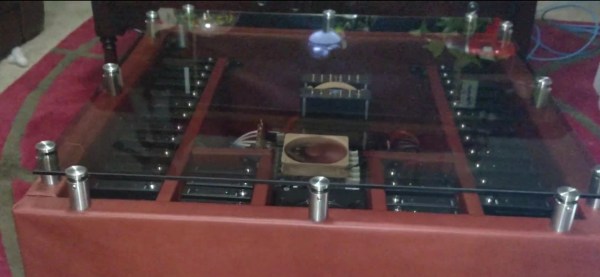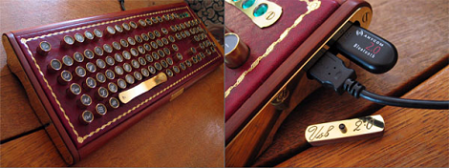After [Travis]’s media server died a couple months ago, his brother [Nick] secretly plotted to replace it for Christmas. Admitting it to be an “asinine Rube Goldberg” arrangement, [Nick] wanted something custom and remarkable for his sibling. Rather than go the normal SATA route, 38 USB hot-swap laptop drives were clustered together inside a custom leather enclosure with a bronzed glass top.
[Nick] picked up 45 of the 500GB drives for only $350 and designed the project around those. He spent $1000 on matching metal docks for each of them, powered by $800 worth of PCIe quad independent USB controllers – no hubs. A $550 Xeon motherboard with 14 USB ports, 16GB of RAM, a basic video card and a 1000W power supply rounded out the electronics.
Under Windows 8.1 all drives are arranged in a single giant array under Storage Spaces, no raid.
Everything was built into a wood-framed coffee table wrapped in high-end leather that [Nick] spent 65 hours hand stitching himself. Fancy brass corner braces hold the frame square. All the wires were run underneath the table so the visible surfaces are clean and clear. The table structure is lifted up on legs made from half-inch square barstock bent into a hairpin and bolted to the underside.
All together [Travis]’s Zerg-Berg media server cost in the range of $4500. [Nick] intends it to be something that lasts him a very long time.
See the video below for [Nick]’s rationalization explanation of the hardware and methods chosen.
Continue reading “Brother Builds “Zerg-Berg” Coffee Table Media Server – 38(!) USB Drives”















